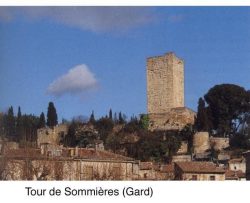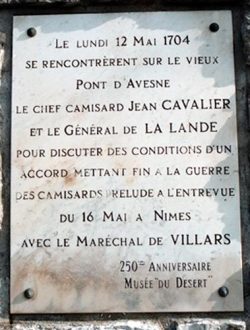The Vaunage and Vistrenque regions
In the triangle between Nîmes, Sommières and Lunel, the Protestant memory is at its height. As early as 1580, in the Vaunage and Vistrenque together, three-fourths of the small towns and villages already had their own pastor and worship place.
Sommières was a Huguenot stronghold
In 1629 after the Alès peace, the castle was used as a prison and a holding place for galley slaves bound for Montpellier and Marseille.
In October 1685, after the abuses of the king’s dragons, the region recanted without resistance.
The Camisards war
In 1693 a revival of the faith developed. Prophesying appeared in 1700 in Vaunage, as it did in the Cévennes region, which took part in the Camisards war (1702-1704).
On 13 August, 1702, Baron Saint-Cosme – a Catholic – was murdered by the Camisard chief Maurel dit Catinat between Uchaud and Boissières.
In 1703, the Camisards slaughtered Catholics in Saturargues and Saint-Sériès. On 13 November Cavalier challenged the royal troops in Nages. But marshal Montrevel took a spectacular revenge on Cavalier on 16 April 1704.
On 12 May 1704 at Pont-d’Avesnes, armistice negotiations started between general La Lande and Cavalier, a preparation to the Villars-Cavalier meeting on 16 May in Nîmes.
On 27 May 1704, the armistice was signed in Calvisson – memorial tablet at the town hall.
Desert assemblies took place throughout the 18th century.
In 1713 in Milhaud, an assembly was discovered, and 17 partakers were sentenced to the galleys.
Bibliography
- Books
- DUBIEF Henri et POUJOL Jacques, La France protestante, Histoire et Lieux de mémoire, Max Chaleil éditeur, Montpellier, 1992, rééd. 2006, p. 450
- LAURENT René, Promenade à travers les temples de France, Les Presses du Languedoc, Millau, 1996, p. 520
- REYMOND Bernard, L’architecture religieuse des protestants, Labor et Fides, Genève, 1996
Associated notes
-

Lieux de mémoire en Languedoc-Roussillon
De la Méditerranée au Massif Central, le Languedoc-Roussillon regroupe les départements des Pyrénées-orientales (66), de l’Aude (11), de l’Hérault (34), du Gard (30) et de la Lozère (48). En fait,... -
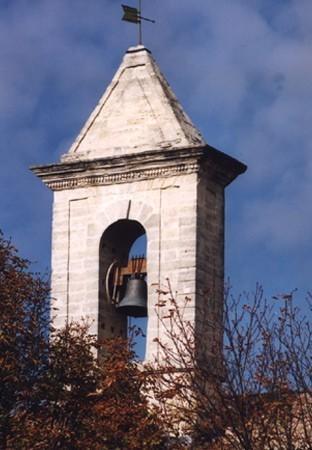
Uzès et ses environs
-
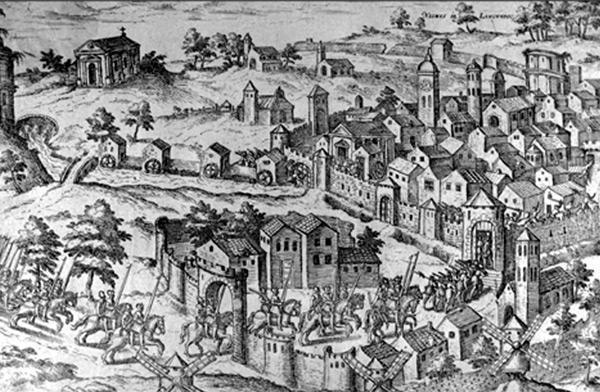
Nîmes et ses environs
-

Aigues-Mortes
-
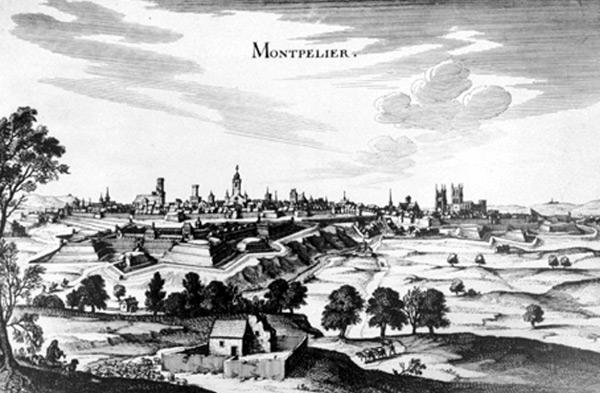
Montpellier et sa région

